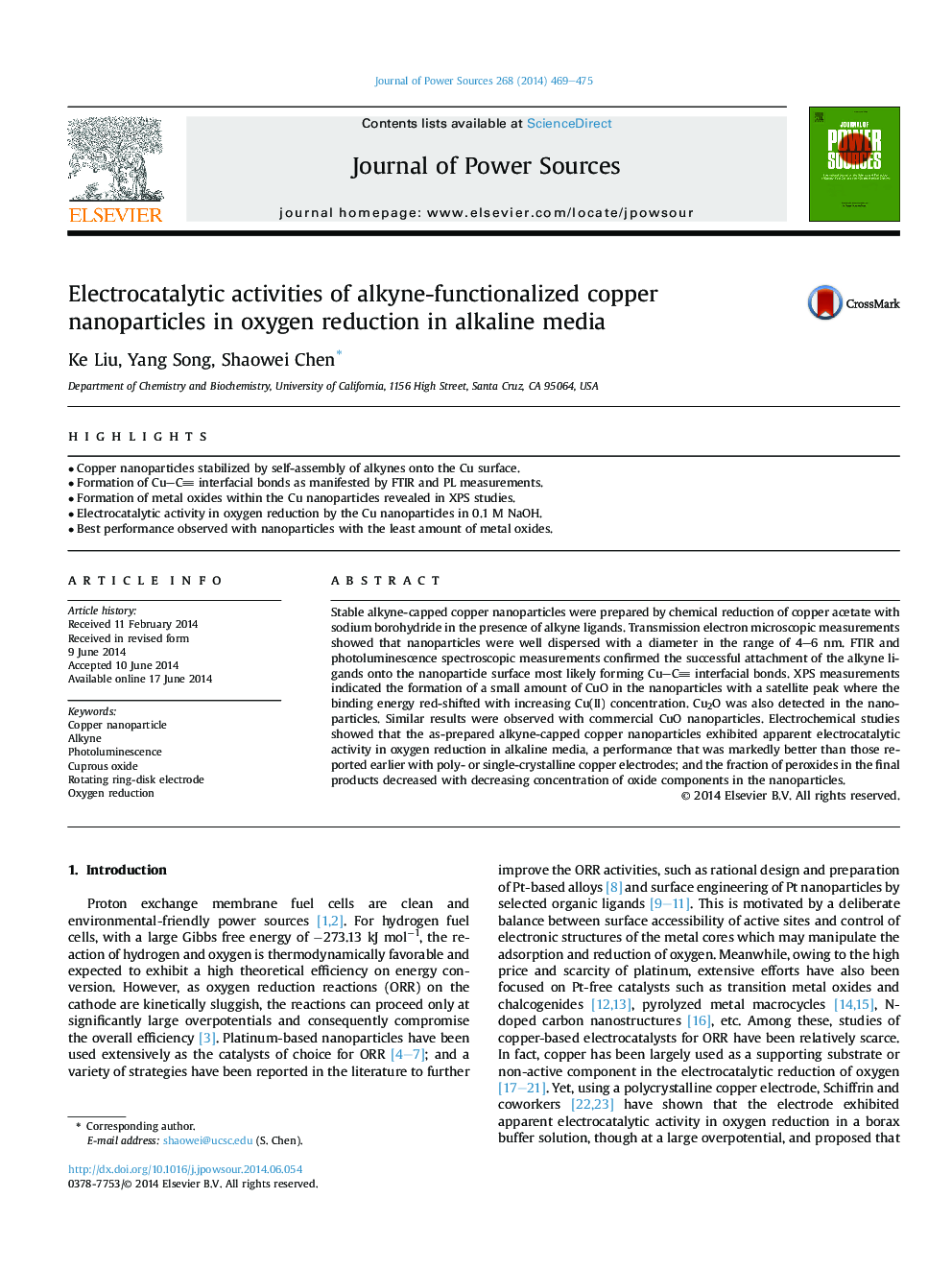| Article ID | Journal | Published Year | Pages | File Type |
|---|---|---|---|---|
| 7736101 | Journal of Power Sources | 2014 | 7 Pages |
Abstract
Stable alkyne-capped copper nanoparticles were prepared by chemical reduction of copper acetate with sodium borohydride in the presence of alkyne ligands. Transmission electron microscopic measurements showed that nanoparticles were well dispersed with a diameter in the range of 4-6Â nm. FTIR and photoluminescence spectroscopic measurements confirmed the successful attachment of the alkyne ligands onto the nanoparticle surface most likely forming Cu-C interfacial bonds. XPS measurements indicated the formation of a small amount of CuO in the nanoparticles with a satellite peak where the binding energy red-shifted with increasing Cu(II) concentration. Cu2O was also detected in the nanoparticles. Similar results were observed with commercial CuO nanoparticles. Electrochemical studies showed that the as-prepared alkyne-capped copper nanoparticles exhibited apparent electrocatalytic activity in oxygen reduction in alkaline media, a performance that was markedly better than those reported earlier with poly- or single-crystalline copper electrodes; and the fraction of peroxides in the final products decreased with decreasing concentration of oxide components in the nanoparticles.
Keywords
Related Topics
Physical Sciences and Engineering
Chemistry
Electrochemistry
Authors
Ke Liu, Yang Song, Shaowei Chen,
